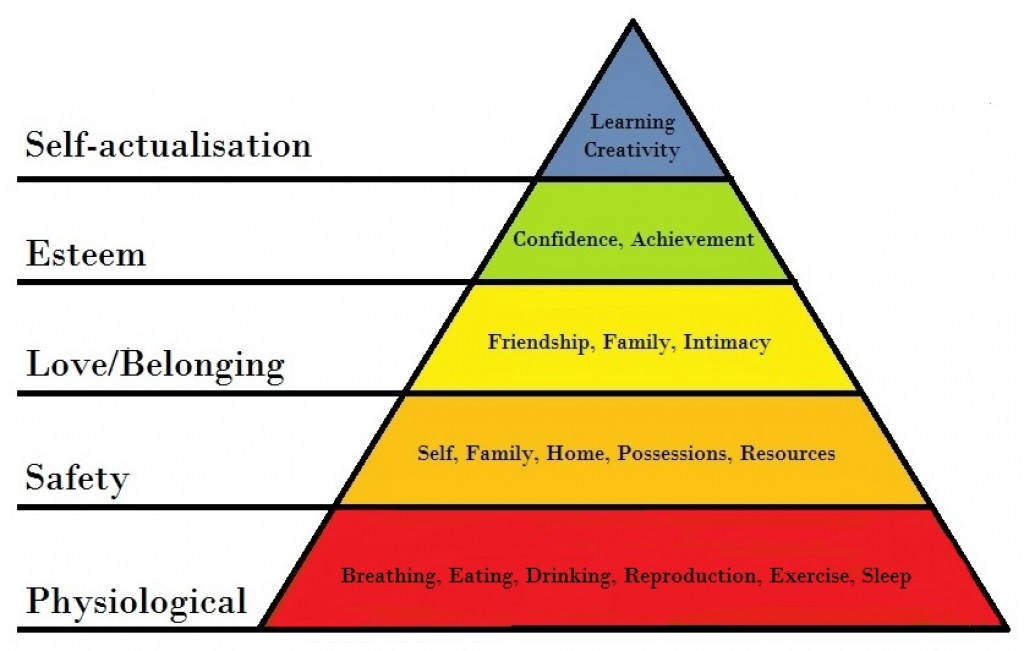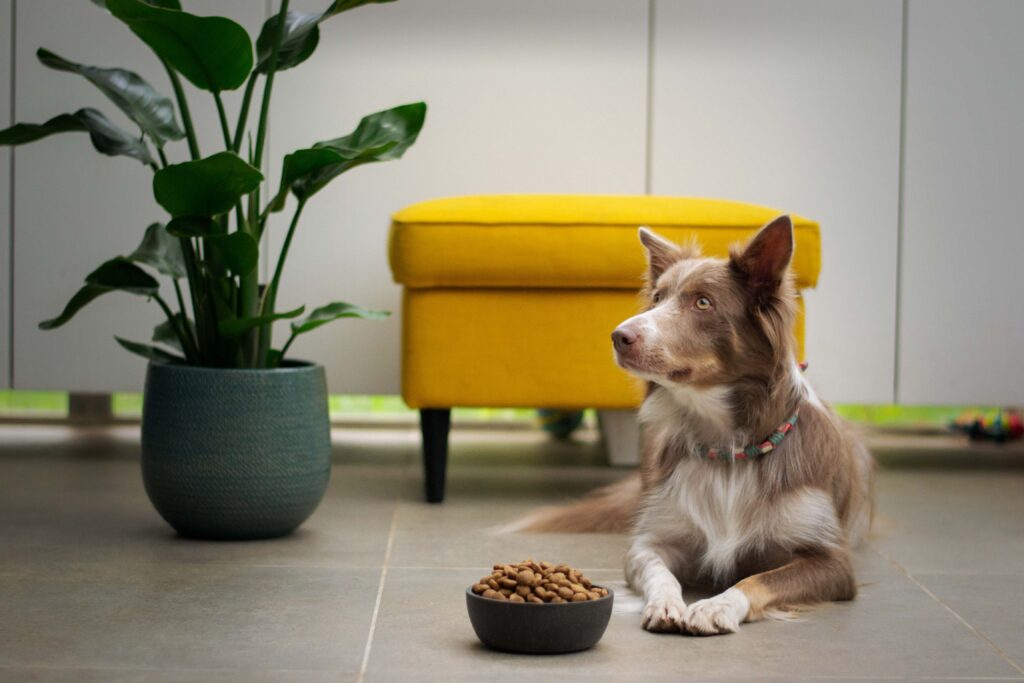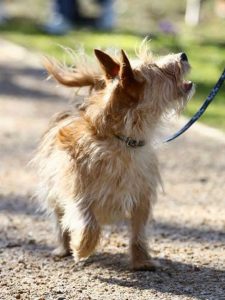Need help with Reactive Dog Behaviour? Join my FREE Facebook support group...
Food guarding in dogs
Food guarding in dogs is a big problem. At best you’ll be on alert much of the time, and at worst it can be dangerous to you, and your dog. But where does it come from, and how can you start to manage it so it doesn’t escalate into a serious problem?
Why dogs guard their food?
Why do any of us guard our food? Simply because, our lives literally depend on it!
Of course, food is abundant for most of us so we don’t really need to guard it. But when we are under pressure we seek to control our environment and our resources become precious to us. For some dogs, this is enough to want to guard their food.
Pressure can come from anywhere, a chaotic living environment, unpredictable feeding routine, lack of exercise or socialisation, frustration, ill health, and anxiety are all potential contributors.

Maslows hierarchy of needs shows us which needs are most important to our dogs. The closer to the bottom of the pyramid a need is, the more essential it is to meet it. You’ll see that physiological and safety needs are at the bottom. These are most likely to unbalance a dog when they not fully met.
For other dogs, food aggression starts from a specific experience. When a dog has felt hunger, or felt their food was under threat, this can trigger survival mode. In this mode, their reactive brain takes over. They can begin to obsess, and start making decisions designed to protect, control, and obtain food.
A bad experience could be as simple as food being taken from their bowl or being teased with food. Or it could stem from something more traumatic such as having to fend for themselves as a rescue dog, or getting lost, even for a day or two.
How to satisfy the need?
Just like us, the hungrier the dog is the more valuable their food becomes. As the urgency for food increases the more likely any dog is to guard his food. Once a dog has satisfied his hunger, he’ll not value food in the same way. Food tastes and smells better when we are hungry and we are more likely to try new foods. We only get fussy when we have recently eaten, so a fussy dog is definitely not a hungry dog.
We can see that when hunger is triggered, survival mode is also triggered, and this changes the way they feel about food. So we want to stop our dogs feeling genuine hunger. Of course, it’s normal to feel some hunger, that’s how we know when to eat. But, the longer hunger is felt for the more urgent it becomes to satisfy that need. Getting them into a good routine of eating at regular times will prevent dogs from feeling hungry at odd times. If you are feeding the right amount of food at set times, your dog will naturally become hungry around those times.
Having a predictable routine will also stop your dog from worrying about food. If he knows he’ll get fed after Eastenders, he’ll relax and wait until them. If he’s not sure, anxiety will creep in and he’ll start getting agitated and reactive at the first sign of hunger.
Remove all anxiety around food and feeding
Your dog can’t tell you if he’s craving for something in his diet, so I suggest switching to a good quality complete diet too. We get cravings when we are hungry for a specific nutrient and make choices based on what we fancy. Dogs don’t get that choice. So we have to make sure they get everything right to avoid cravings occurring in the first place.
Health concerns of any kind can also trigger food aggression. So before going any further, make an appointment to see your vet. Once you know everything is ok, which it probably is, you can move forward with confidence.

Recognise when it starts
We all recognise growling and snapping as food guarding behaviour, but actually there’s more to it than that. A dog that is uneasy may also show signs of stiffness, starring, side eye, lip quivering, and may be posturing over or near the food item.
You may not need to get particularly close to see this type of reaction. Sometimes just walking in the same room will be enough. But when you spot it, that’s your cue to stop what you are doing. Don’t let the situation escalate beyond that initial reaction, if you can help it. Guarding mode has been triggered and if you push your luck, your dog will see he is not being listened to and the situation will escalate. Deal with it now, as it’ll be much easier.
Tackling food guarding – First Steps
Your first job is to make sure his needs are being met. So a good routine, clean bill of health, and plenty of good quality food will be a good start.
His feeding environment is important too. A quiet spot where he can eat his food in peace without worrying about other pets, or kids running in and out, is much better than a busy kitchen. Also, ditch the slow feeder. Slow feeders trigger survival behaviours which can be linked to food guarding. You’ve heard of fight or flight, well the opposite of that is rest and digest. He needs to settle at food times to properly enjoy and digest his food. So a quiet and challenge-free environment is needed.
You can also look at the type of food he is getting. Not all food is created equally and high value raw meat is probably more worthy of guarding than low value kibble. Kibble is more likely to be complete, so two wins here. Your vet should be able to discuss your dogs diet with you, and if necessary they might recommend a probiotic too if they have nutritional concerns.
Keep high value treats and food as small rewards. I say small as they’ll be finished quickly. Long lasting treats are much more likely to be kept and guarded than a bitesize piece of chicken. Of course, what your dog considers high value could be very different to another, so get to know your dogs preferences and work around them.
Changing Expectations
Those first steps should ease any feelings of anxiety associated with food. But once guarding behaviour has been triggered it’s unlikely to stop by itself. So, you’ll need to take extra steps to support your dog to change his behaviour. To do this you must change his expectations!
Earlier we discussed the very first signs of tension around food. He is probably expecting you to come over to him. Rightly or wrongly, he associates this with losing his food. So, we have two things we can do differently – one is we can stop progressing towards him. And the second is, we can introduce extra food! This might look like walking past the kitchen door, stopping at the doorway to throw a piece of food to your dog, and then leaving.
This might be enough to start with, now pay attention to your dogs reaction. As his anxiety falls away, you’ll be able to get closer to him before you see the same reaction. At that stage you’ll still be throwing food down but you might try hanging around to do the dishes, or starting dinner prep, or just sitting and reading nearby.
You can also look at creating behaviour sequences and predictors that also lead to extra food. He will recognise these patterns of behaviour, and when they begin he will predict a tasty outcome, rather than fearing losing food.
Don’ts of food guarding
It may be tempting to test out your training by trying to touch him or put your hand in his bowl. But, please don’t, this would be disastrous to your progress. After spending so long teaching your dog that you aren’t a threat to his food, the last thing you want to do, is the thing he used to fear the most.
Many people ask “should I be able to put my hand in my dogs bowl?” My answer is “probably, but don’t”. Food is a primal need for our dogs, as it is for us, and I, like my dog, will protect it, if needs be!
Finally, don’t do anything if you aren’t sure. if you get it wrong you could do more damage than good. So when in doubt, get a professional to help you with your dog, and your specific situation.
How can I help you with your dogs behaviour?
Private Dog Behaviour Consultations are currently available in the Dundee area and beyond. If you are looking for help solving your dogs behaviour and training problems, then please get in touch!


